SS 2020 Vestige
Diego Bettinaglio.
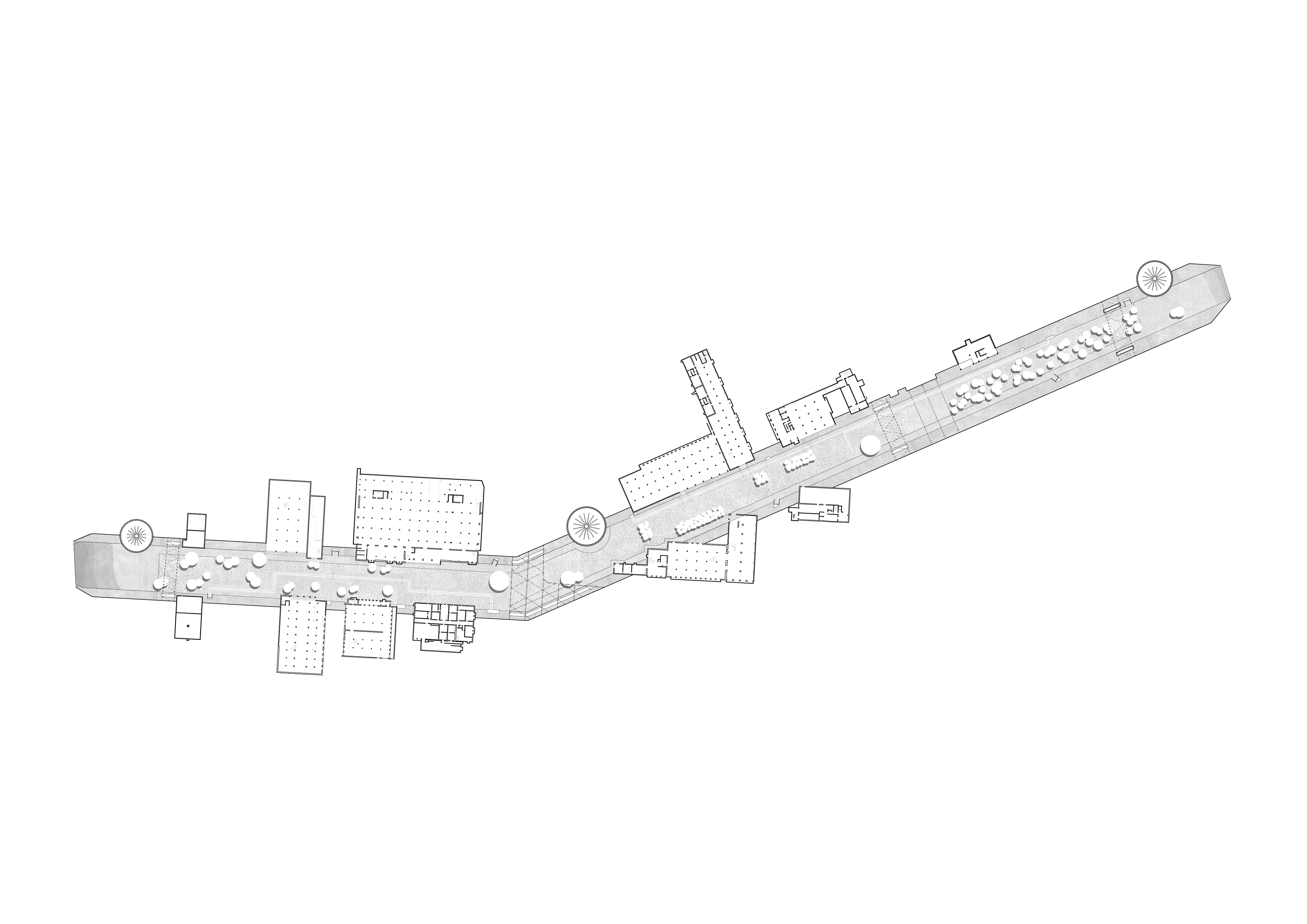
VESTIGE
ves·tige (vĕs ` tĭj) n.
A visible trace, evidence, or sign of something that once existed but exists or appears no more.
VISIBLE OR NOT
This work does not deal with the reuse of CIBAs most valuable building fabric or single buildings in the area, rather it is concerned with the worthless leftovers of the disappearing industry. The proposal deals with the highly contaminated ground and translates it into a visible and persistent body within the city. It creates new spaces instead of filling the existing ones by adding mere building volume. The work questions the widespread perception of preserving single buildings of a former industrial area as memorable, attractive or identity-forming elements to justify the development of a new neighborhood around it. Instead, the area as a whole is grasped with all its elements — visible or not— and a new type of holistic transformation is sought.
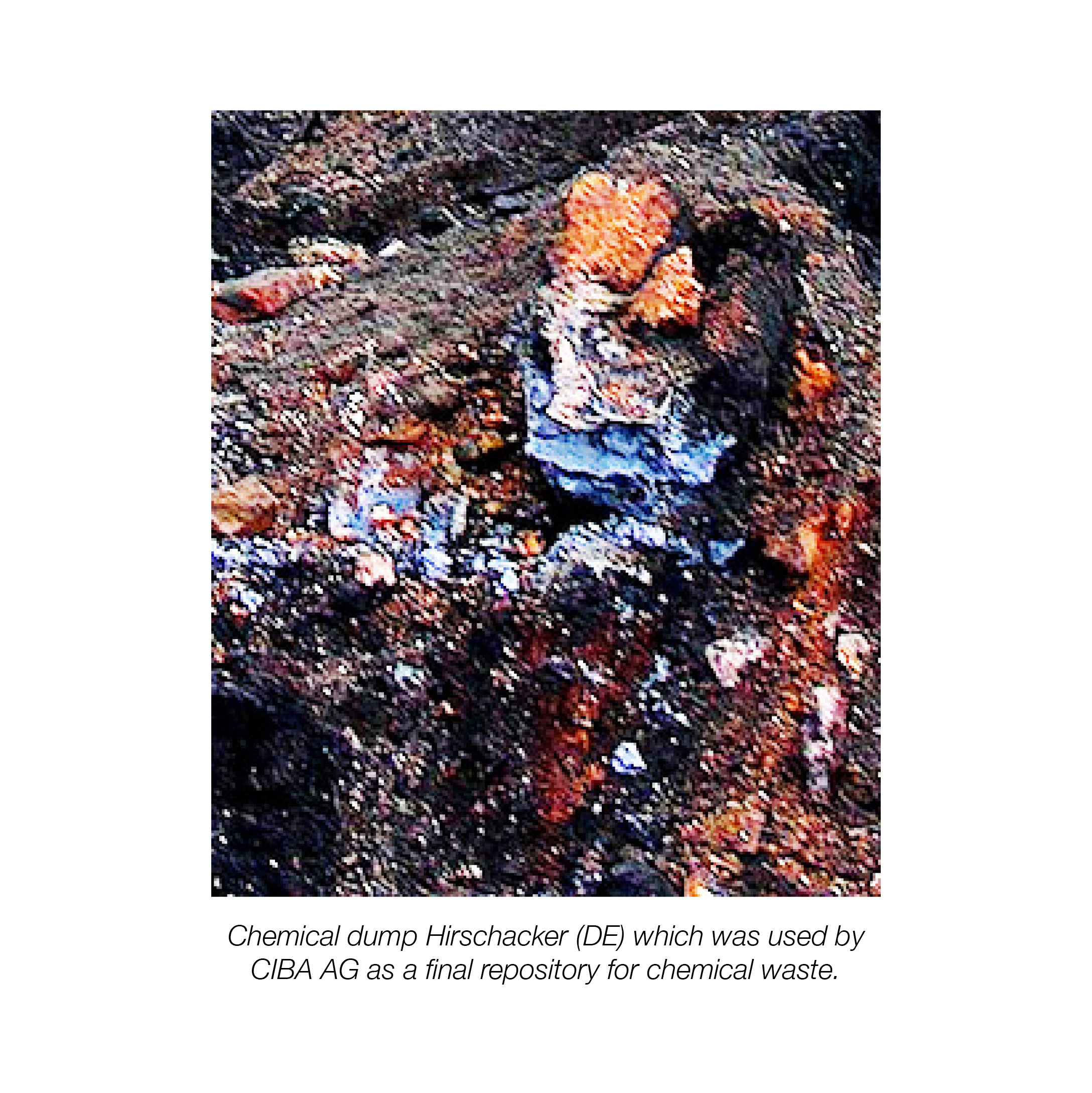
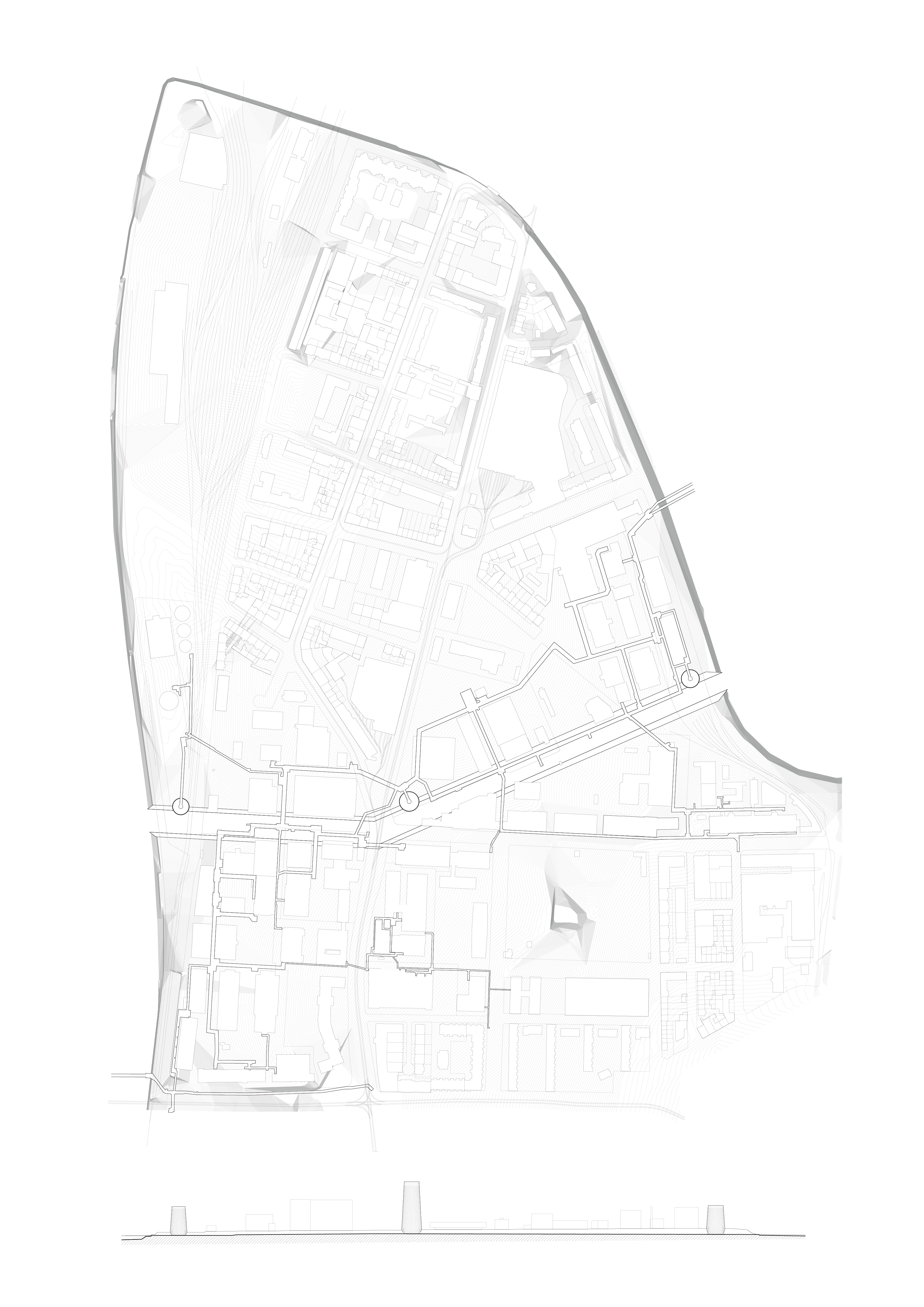
10%
In 1895 the grounds of the entire Klybeck quarter were filled with waste and slag so that the chemical industry could expand on the site. Due to 150 years of produc- tion of chemicals such as paints, adhesives, solvents and later pharmaceutical products, unimaginable amounts of hazardous chemicals were released into the ground through open storages or leaking pipes. The Swiss law stipulates that contaminated soil must be treated before it can be reused. However, approximately 10% of the processed soil accumulates as hazardous waste during the cleaning process and cannot be dumped in a regular landfill. Hence, these materials —the 10%— should not be taken out of Klybeck, au contraire, it should become experienceable and visible in the developing area with a series of urban interventions.
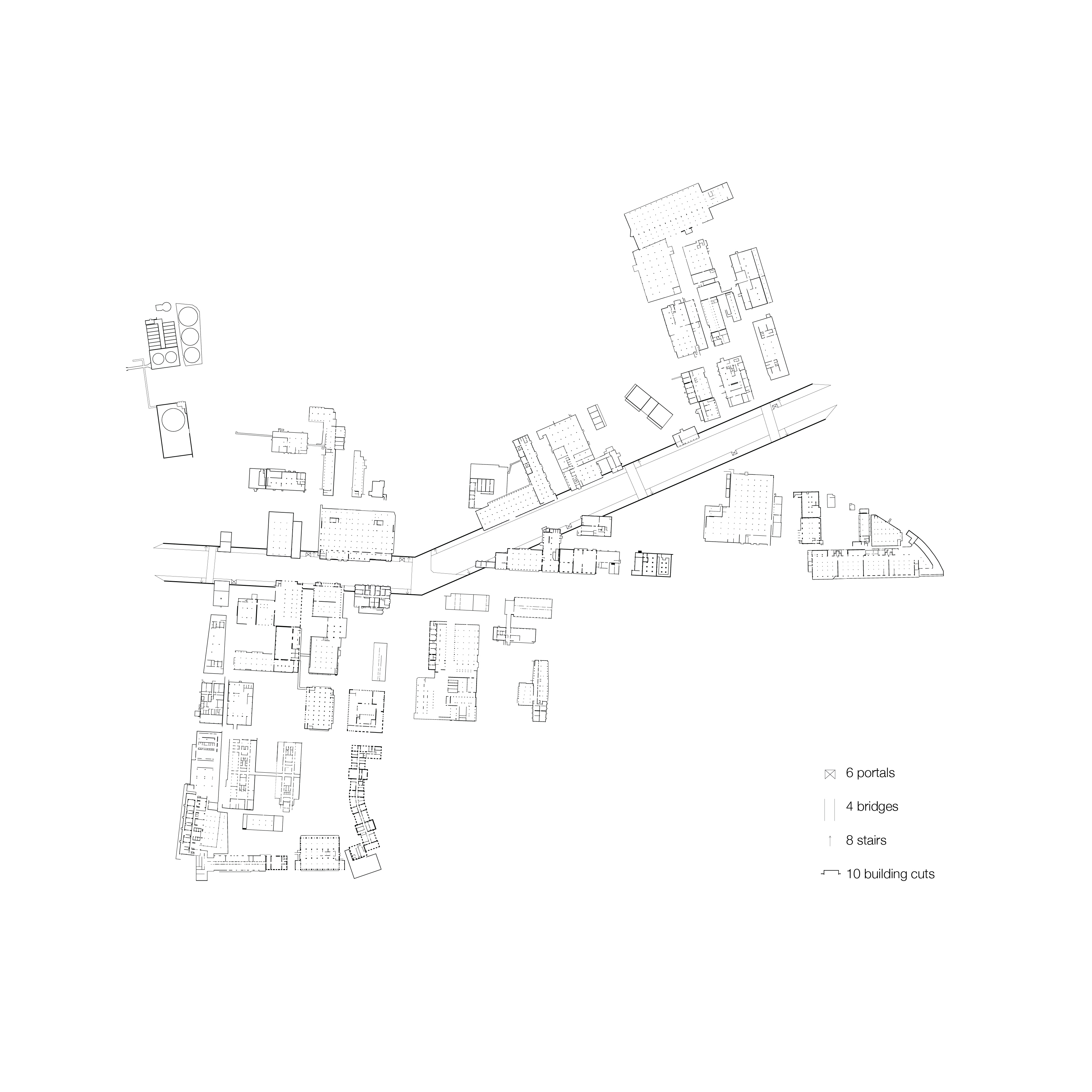
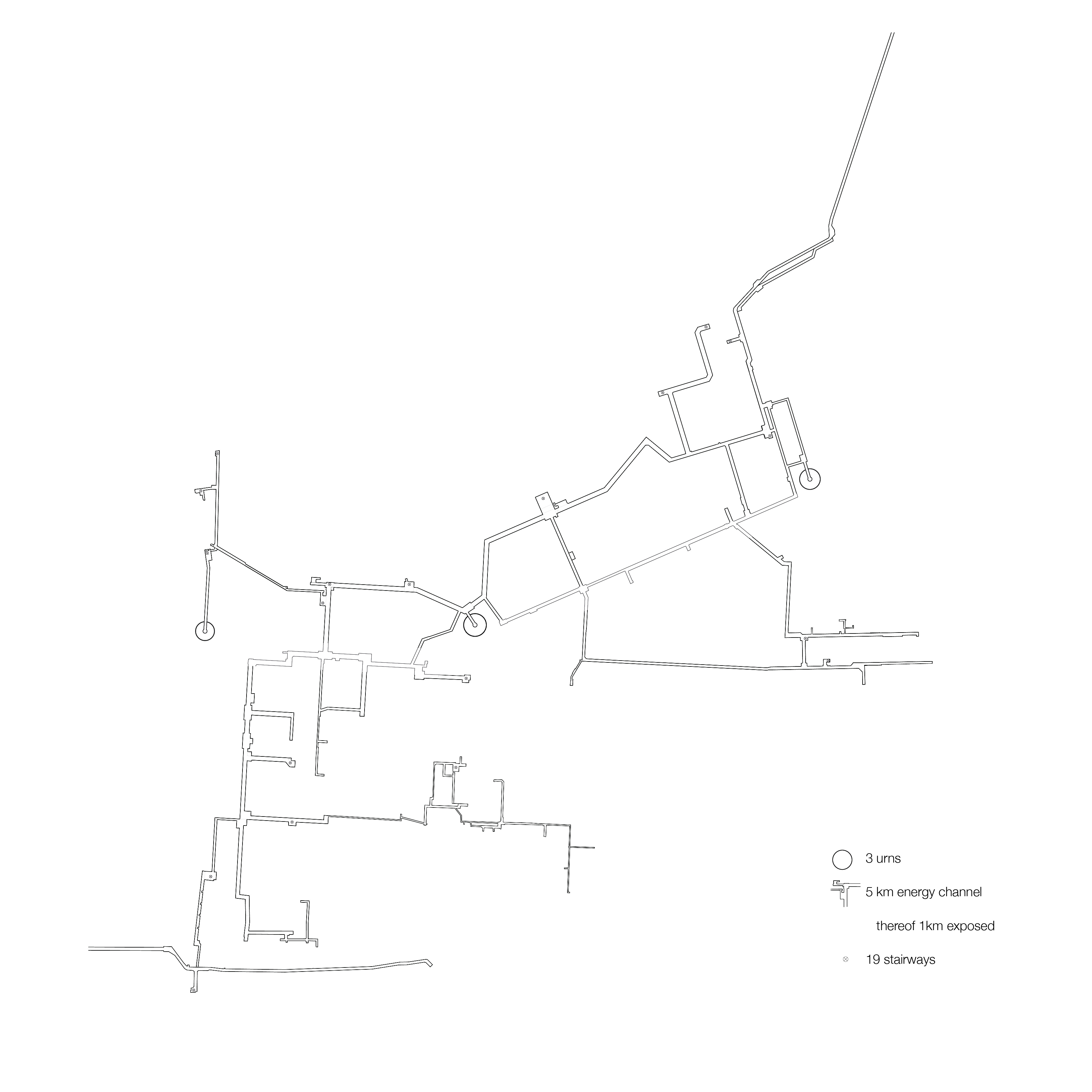
A PIT AND A PILE
Two new forms —a pit and a pile— are introduced to the area directly addressing the issue matter. The contaminated soil is excavated along a formerly restricted non-public street, exposing the vast infrastructure laying beneath the surface. The pit is connecting in West-East direction the rivers Rhine and Wiese, whose areas were separated for the last 150 years by private industrial use. In this strip the most contaminated earth is expected due to the leaky pipes layout of the chemistry industry. A system of paths, bridges and stairs is connecting the bizarre excavation field with the existing city level.
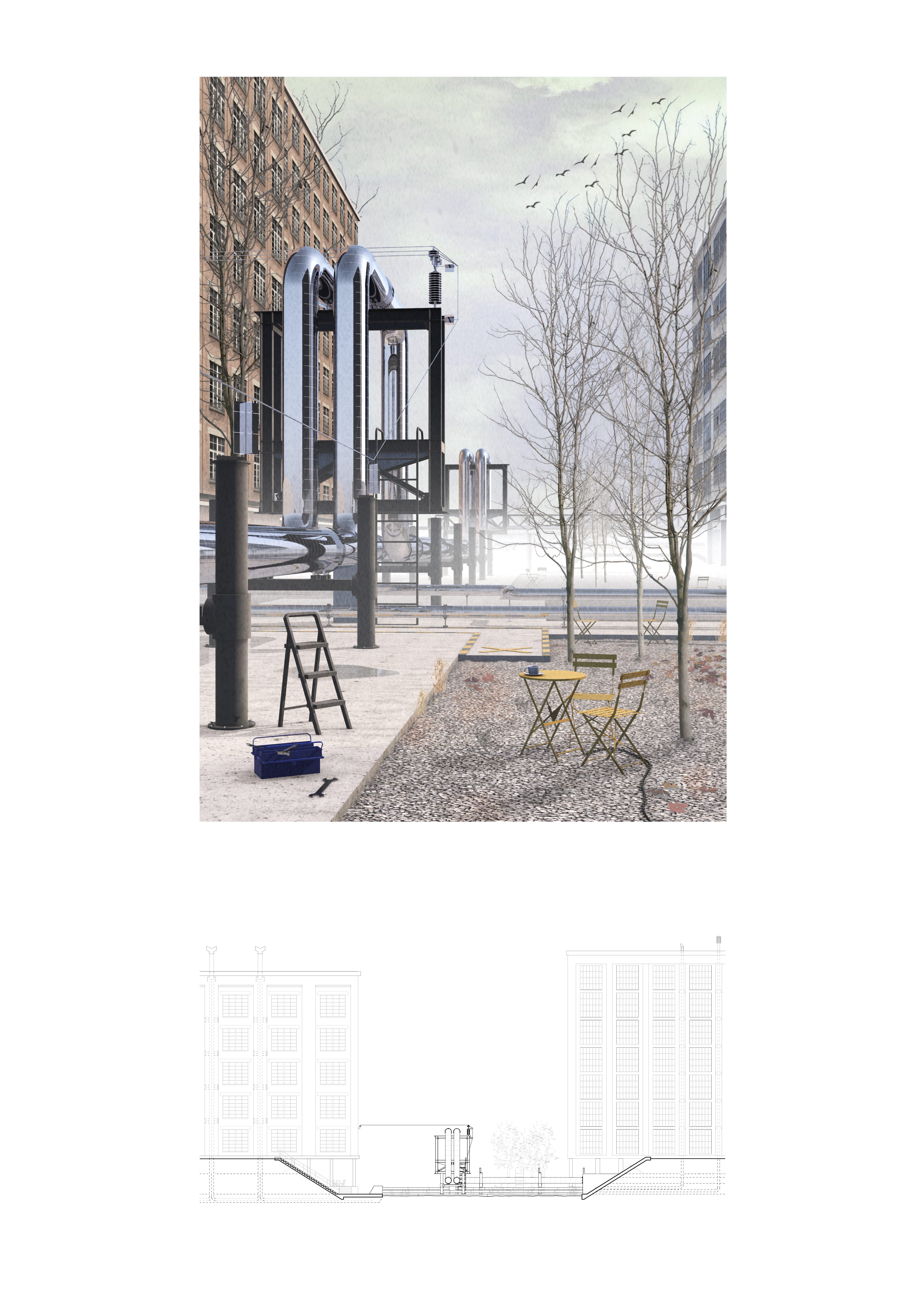
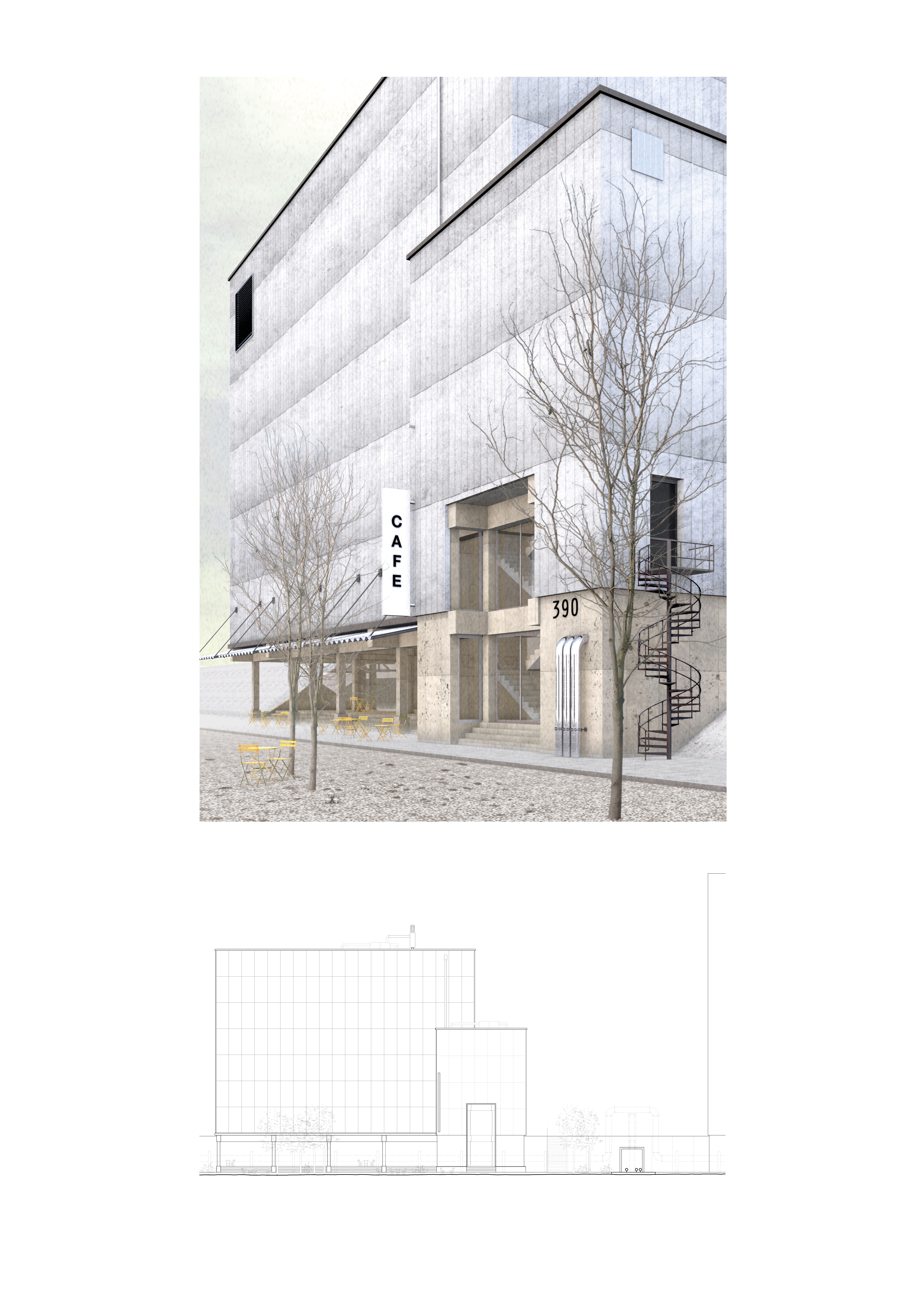
The resulting 10% hazardous waste need to be stored safely to keep people and environment secure. Three large-scale vertical waste urns are placed along the strip in order to store the contaminated soil until natural detoxification takes place. The urn as a semiotic monument is not only a reminder of a disappearing industry. It is a productive element for the new district itself: With its huge concrete mass the urn is very suitable to store heat energy.
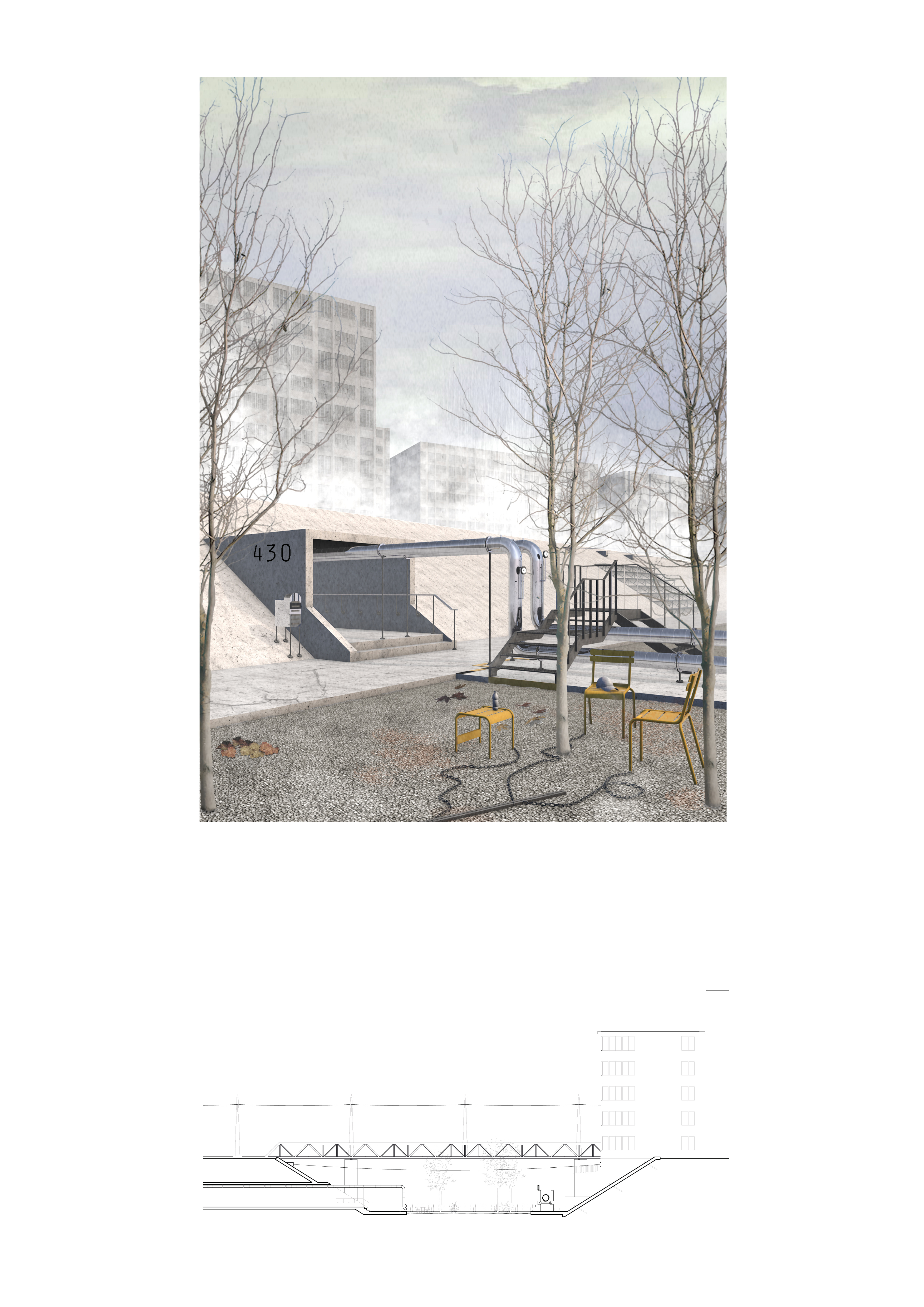
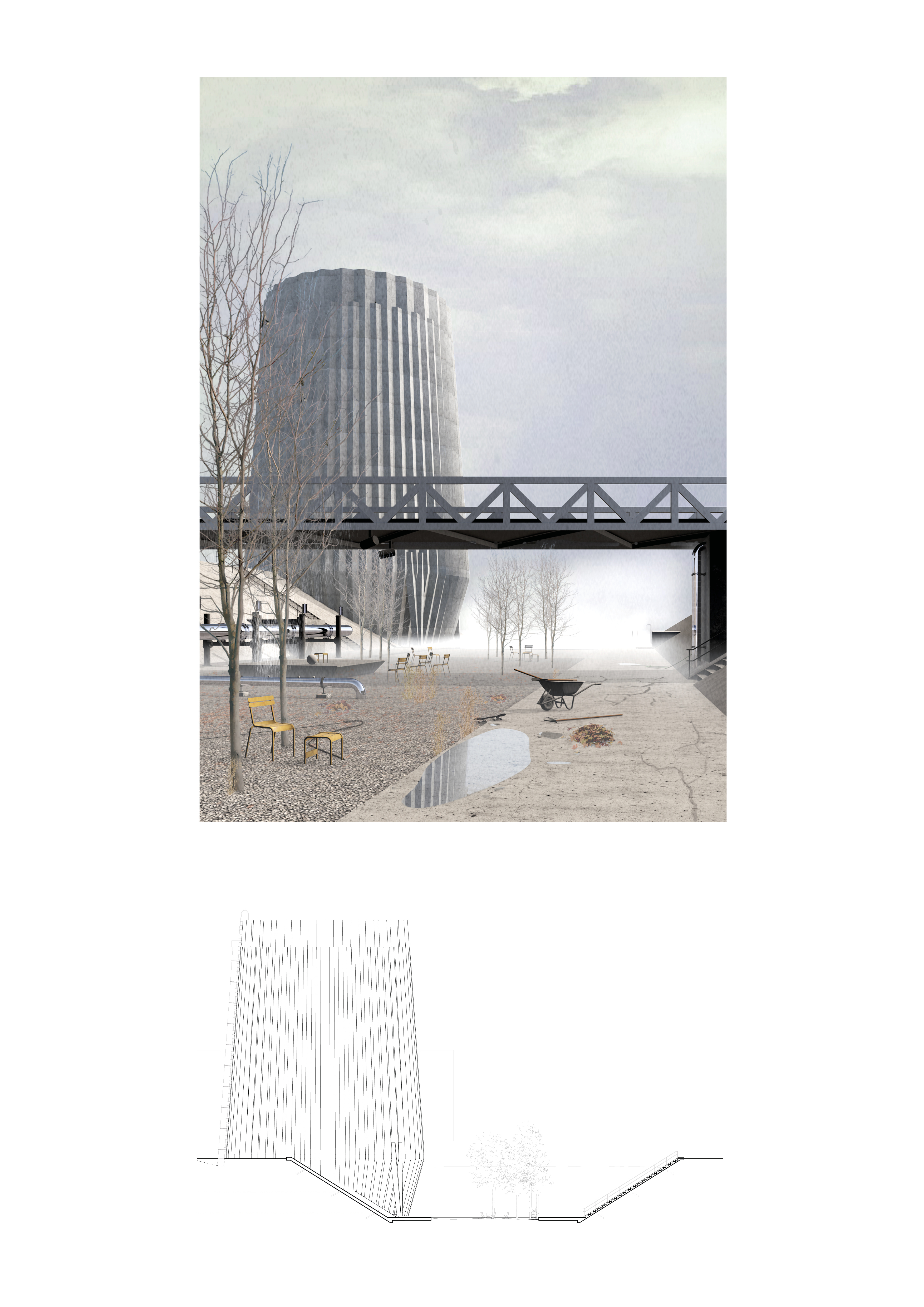
CONTAMINATION
Many organic substances are undergoing a natural decontamination by bac- terial cultures. The increased temperature accelerates this process in the pro- posed urns and after an estimated 50 years, the contamination has fallen below the limit values. To ensure the sustainability of the urns, they can be refilled with contaminated soil from Basel if needed and furthermore serve as an energy storage.
Assumption: 10% hazardous waste ; contaminated depth of 3.5m ; 30% reduction in volume with soil washing, CIBA AG area 280 000 cubic meters
280 000 m2 * 3.5 m * 0.1 = 98 000 m3 excavation
98 000m3 *0.7 = 65 500m3 Hazardous waste for the dump
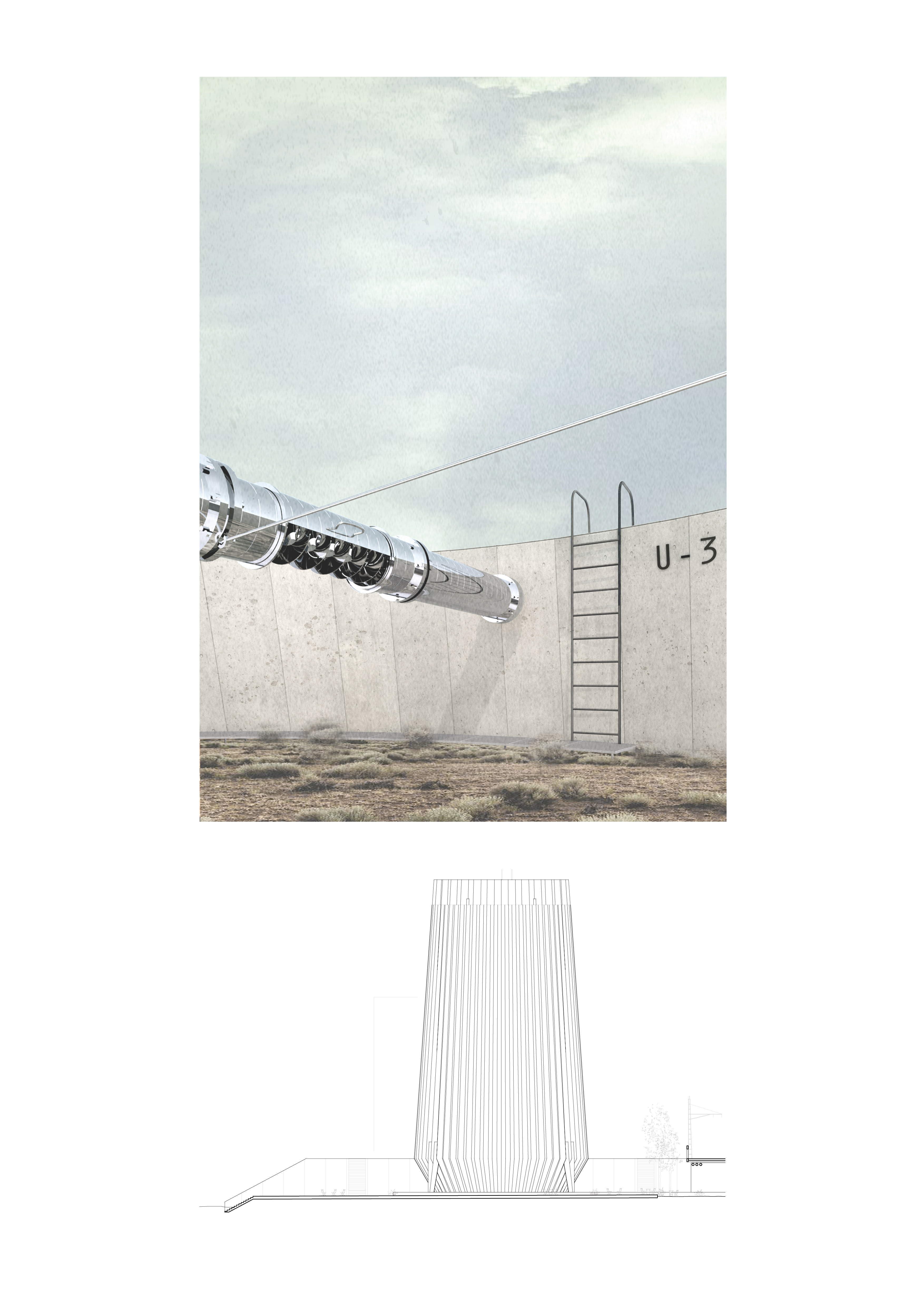
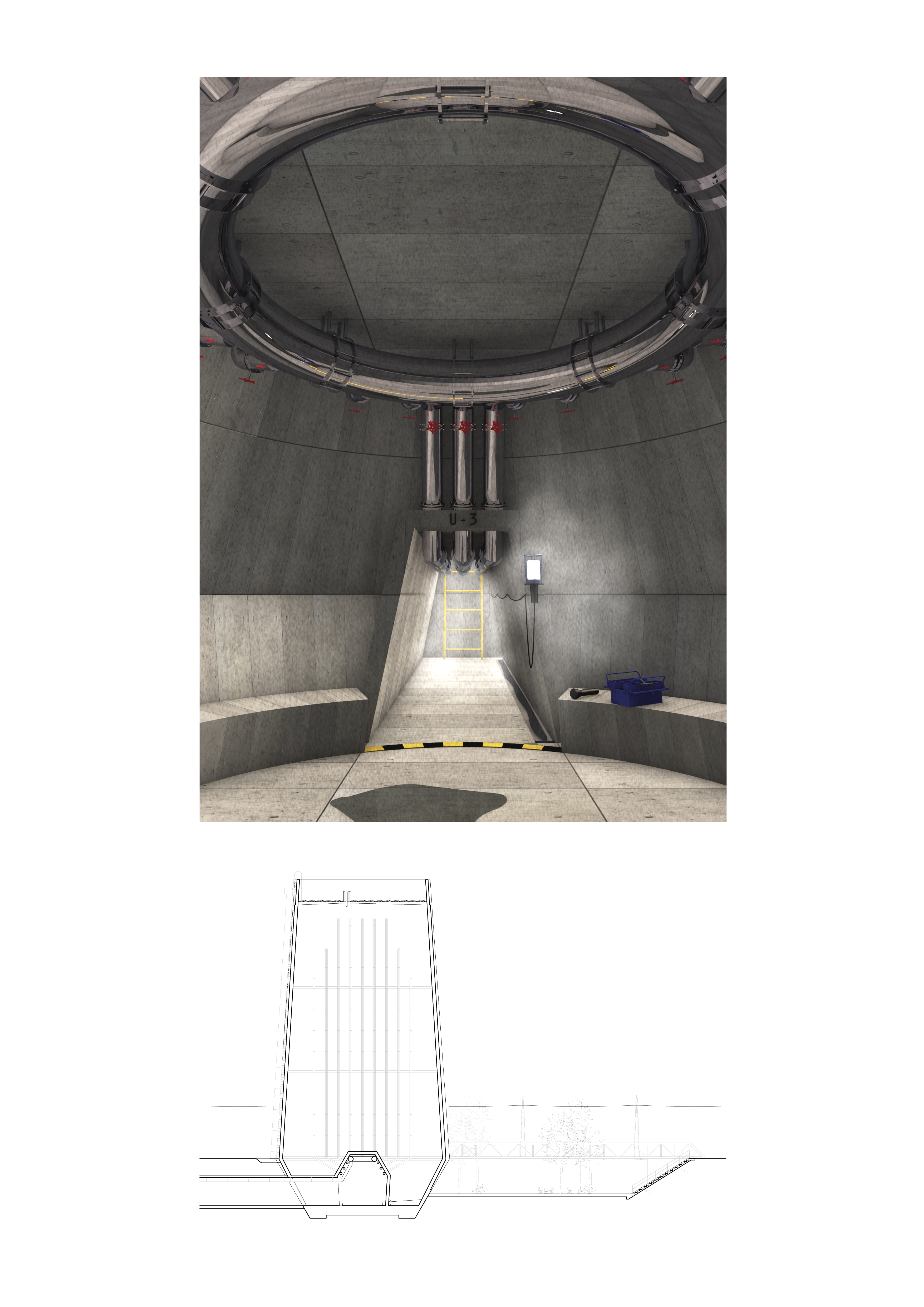
Project by: Diego Bettinaglio
Studio Alex Lehnerer, ETH